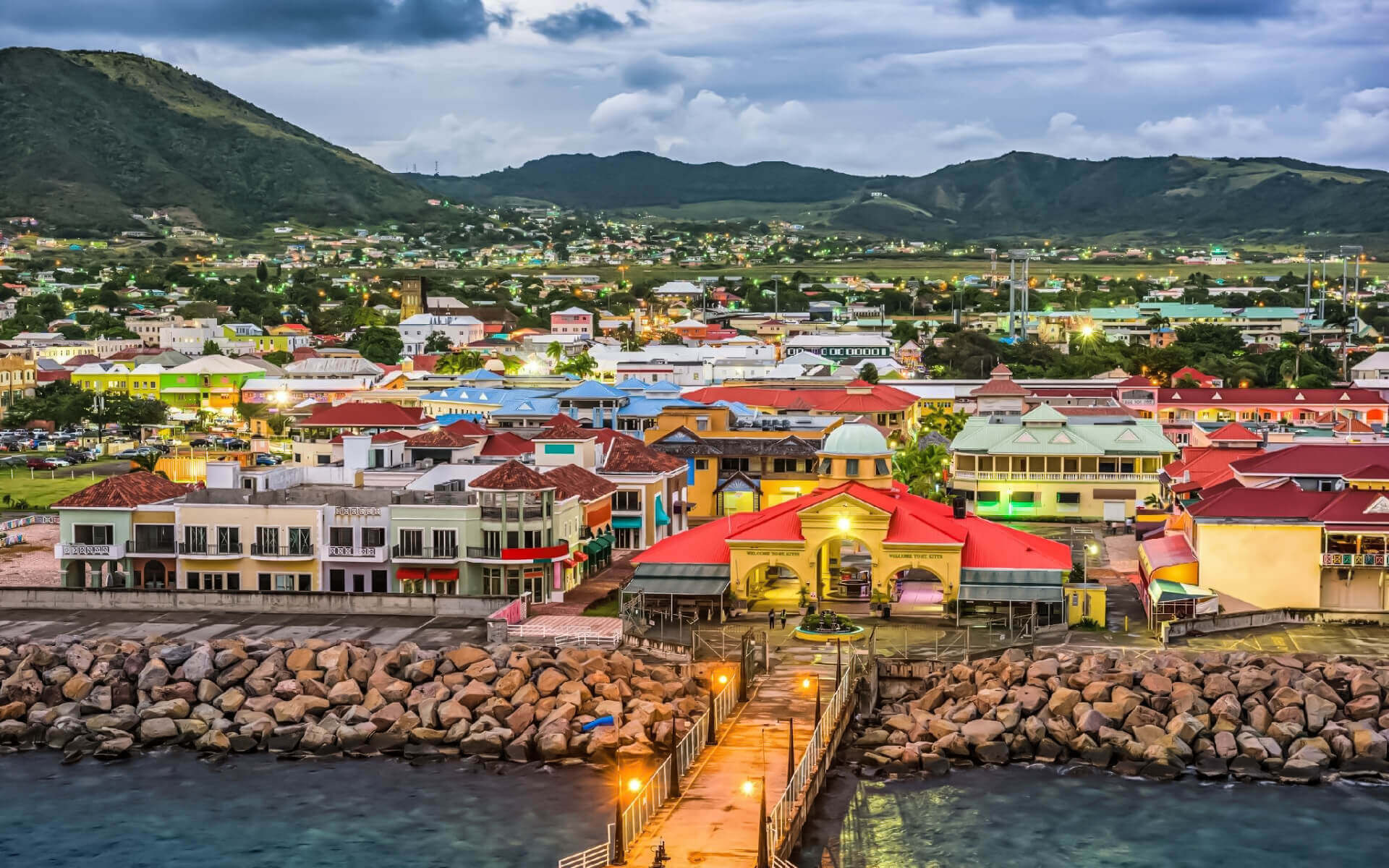The Federation of Saint Kitts and Nevis, sometimes referred to as the Federation of Saint Christopher and Nevis, is a West Indies two-island nation. It is the smallest sovereign state in the Americas, both in terms of size and population. It is located in the Leeward Islands group of the Lesser Antilles. The nation is a Commonwealth realm, with the British monarch as head of state (now Queen Elizabeth II).
Basseterre is the capital city on the larger island of Saint Kitts. The tiny island of Nevis is located about 2 miles (3 kilometers) southeast of Saint Kitts, separated by a narrow waterway known as “The Narrows.”
Anguilla, a British colony, was formerly included in this union, which was referred to collectively as Saint Kitts-Nevis-Anguilla. The islands of Sint Eustatius, Saba (Netherlands), Saint Barthélemy, Saint-Martin/Sint Maarten, and Anguilla are located north-northwest. Antigua and Barbuda are to the east and northeast, while the tiny uninhabited island of Redonda and Montserrat, which presently has an active volcano (see Soufrière Hills), are to the southeast.
Saint Kitts and Nevis were among the Caribbean’s earliest European settlements. Saint Kitts was the site of the Caribbean’s earliest British and French colonies, and as such has been dubbed “The Mother Colony of the West Indies.”
The country consists of two main islands, St. Kitts and Nevis. The highest peak is Mount Liamuiga in St. Kitts at 1,156 metres.
The islands are volcanic in origin, with large central peaks covered by rainforest; the steeper slopes leading to these peaks are mostly uninhabited. Most of the population of both islands live closer to the sea, where the terrain becomes flatter. Numerous rivers flow down from the mountains on both islands, providing fresh water for the population. St. Kitts also has a small lake, a salt pond.
The national bird is the brown pelican.


